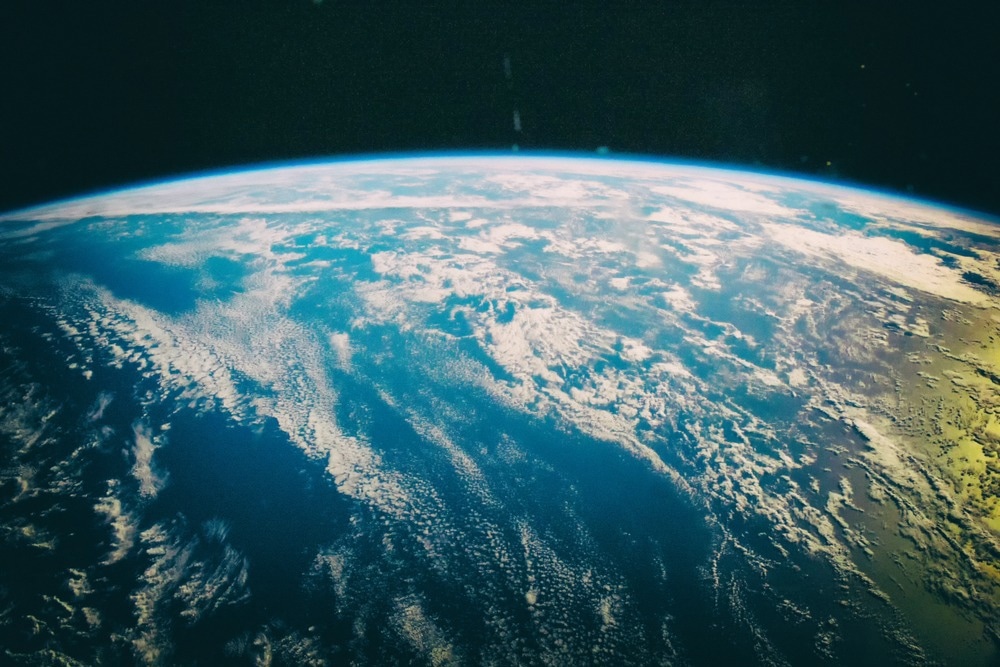The use of hyperspectral data in remote sensing of water color is crucial. A team of researchers developed a 1-D denoising method for hyperspectral water data based on sparse representation, according to a study recently published in Applied Sciences.
 Study: Sparse Representing Denoising of Hyperspectral Data for Water Color Remote Sensing. Image Credit: Vladi333/Shutterstock.com
Study: Sparse Representing Denoising of Hyperspectral Data for Water Color Remote Sensing. Image Credit: Vladi333/Shutterstock.com
For optically complex water, remote sensing requires hyperspectral data. The scattering and absorption of the water color parameters, such as particulate matter, phytoplankton, and colored dissolved organic matter, are the key regulators of the optical characteristics. Different pigments have various optical properties. The spectrometer must include at least 15 bands in the near-infrared and visible spectral ranges at a specific wavelength to accurately measure the concentration of the water color parameters.
Challenges Associated with Accurate Hyperspectral Measurement
Using hyperspectral data, it is challenging to accurately estimate water surface reflectance (Rrs). The above-water approach is common in field measurements because it is reliable and simple. Geometries during the measurement require adherence to prevent instrument shading issues and extract the Rrs. Random errors in the measurement are controlled by collecting multiple spectra at each sampling station and computing their average values as a result.
Denoising Methods for Enhancement of Rrs Curves
Noise is inevitable in hyperstructural data. Focusing on this problem, researchers use denoising methods to try and improve the quality of the Rrs curves.
These methods fall into three categories: 1-D, 2-D, and 3-D techniques. The 1-D methods depend on the spectrum, including mean filter smoothing, Savitzky-Golay polynomial smoothing, and kernel regression smoothing (KRS).
Because of deficient spatial information, choosing the proper denoising level to prevent over-denoising in 1-D techniques can be challenging. The 2-D and 3-D methods focus on hyperspectral images. The hyperspectral image divides the emitted signal from the field of view into several spectra bands in each pixel. Hyperspectral image division is more challenging than field measurement.
The rapid orbital speed of the sensor places restrictions on integration time. It is complex to obtain high SNR images using hyperspectral data remote sensors. The total variation approach, wavelet transform, and principal component analysis are examples of signal processing techniques that are extensively employed.
Potential of Deep Learning Algorithms for Hyperspectral Data Denoising
Recent deep learning, low rank, and sparse representation techniques show significant promise for denoising hyperspectral data. By completely utilizing the spectral and spatial data, these methods can extract considerable signals from the noisy data in the hyperspectral image.
Both the 2-D and 3-D methods require spatial data. These methods can only be applied to denoise hyperspectral images. Therefore, the main focus of this study is on 1-D approaches, which can be used for field-measured and remotely sensed hyperspectral data.
Development of Sparse-Representing Denoising Technique for Hyperspectral Data
The denoising technique challenges the variety of Rrs features produced by different optical properties. To retain the universality and high accuracy of the model, Guo et al. included a bio-optical model in the sparse-representing technique.
The process initially generates a sizable hyperspectral Rrs dataset, after which the noisy Rrs signals are divided into noise and sparse signals. Recomposing sparse signals completes the denoising process. The outcomes provide more accurate information for creating optically complex water-color models and hyperspectral data applications.
Research Findings
In both simulated and real datasets, the sparse representing denoising performance was compared with widely used approaches. The outcomes show that sparse representation can separate the hyperspectral water-surface reflectance signal from random disturbances. The suggested method performs better at various input signal-to-noise ratio (SNR) levels than the other three methods.
Field-measured and remote-sensing hyperspectral data show aberrant spectral vibrations that the suggested method removes successfully. Despite being 1-D in design, the approach can manage the salt-and-pepper noise in PRISMA hyperspectral images.
As a result, the suggested denoising approach enhances the hyperspectral data of an optically complex water body and provides a better data source for the remote monitoring of water color.
Sparse Representing Denoising Approach Improves Remote Monitoring of Water Color
For optically complex hyperspectral water data, the researchers in this study created an SR denoising approach, tested on three hyperspectral datasets.
The findings showed that the SR approach could eliminate random and systematic mistakes from hyperspectral data while preserving essential signals. The approach is resilient to various kinds of error distribution. The denoised hyperspectral data can enhance the correlation coefficients between the spectra indices and Cchla.
Reference
Guo, Y., Bi, Q., Li, Y., Du, C., Huang, J., Chen, W., Shi, L., & Ji, G. (2022). Sparse Representing Denoising of Hyperspectral Data for Water Color Remote Sensing. Applied Sciences, 12(15), 7501. https://www.mdpi.com/2076-3417/12/15/7501/htm
Disclaimer: The views expressed here are those of the author expressed in their private capacity and do not necessarily represent the views of AZoM.com Limited T/A AZoNetwork the owner and operator of this website. This disclaimer forms part of the Terms and conditions of use of this website.